#iot gateway lorawan
Text
Gateway LoRaWAN da Radioenge Tutorial Completo
Neste tutorial você vai aprender instalar qualquer gateway LoRaWAN em qualquer placa compatível com Raspbian
O Gateway LoRaWAN da Radioenge é o único gateway fabricado no Brasil que possui homologação da Anatel e é facilmente integrado com Raspberry pi e Banana Pi.
1 Gateway LoRaWAN para que serve?
O gateway LoRaWAN nada mais é do que um dispositivo que faz a ponte entre os “end devices” e o servidor, de modo que consiga chegar até a aplicação, resumidamente ele tem a mesma função que o modem da sua…
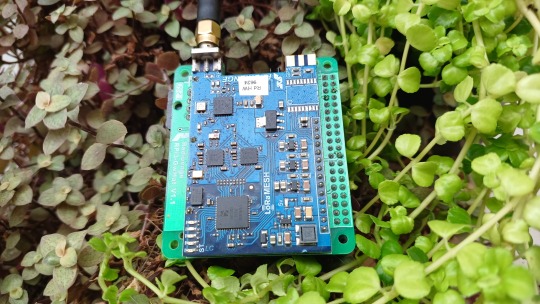
View On WordPress
#arduino lorawan gateway#cisco gateway lorawan#gateway lorawan#gateway lorawan arduino#gateway lorawan dragino#gateway lorawan outdoor#gateway lorawan raspberry pi#indoor gateway lorawan#iot gateway lorawan#kerlink gateway lorawan#lorawan gateway aliexpress#lorawan gateway amazon#lorawan gateway australia#lorawan gateway aws#multitech gateway lorawan
0 notes
Link
LG1301-SE is the LoRaWAN gateway. It works with LoRaWAN node LN610 only. It integrates Standard LoRaWAN protocol V1.0 Class C.

NiceRF: How to use LoRaWAN Gateway LG1301-SE
1. Power on of LoRaWAN Gateway
After powered on, the power led will light on to indicate, the LoRaWan gateway start the initialization. After 15s, the Tx LED will blink once to indicate the Linux system is ready, and then 5s later , the status LED will blink once per second which indicate the whole system is ready. Then it enters the normal working mode.
2. Normal Working Mode of LoRaWAN Gateway
In normal working mode, when payload is inputted to LN610, LN610 will transmit the packet to LG1301-SE automatically. After LG1301-SE received the data, it will output the payload in uplink format by serial interface.
When payloads with downlink format are inputted to LoRaWan gateway LG1301-SE.
LG1301-SE will transmit the packet automatically. LN610 will compare its Device Addr with the received packet. If the Device Addr is match, it will output the payload by serial interface.

Uplink/downlink format (All the data are in HEX format)
Uplink format: ( Data from the node to the gateway )
Header ( 5 bytes) + Length ( 1 byte) + Device Addr ( 4 bytes) + Payload + Frame end (2 bytes)
Header: fixed to “$lora”;
Length: payload length + 4
Device Addr: MSB, Target Device Addr, only the product with this Device Addr will receive the message when send downlink packet.
Frame end : fixed to 0x0d 0x0a
Example:
LN610 input hex data:
AA BB CC DD EE FF
LG1301-SE output hex data:
24 6C 6F 72 61 0A 01 B9 EC DC AA BB CC DD EE FF 0D 0A
Parse:
24 6C 6F 72 61 --------------------- Header
0A --------------------- Length
01 B9 EC DC --------------------- Device Addr
AA BB CC DD EE FF --------------------- Payload
0D 0A --------------------- Frame end
Downlink format : (Data from the gateway to the node)
Format: Device Addr ( 4 bytes) + payload
Example:
LG1301-SE input hex data:
01 B9 EC DC 11 22 33 44 55 66
LN610 output hex data:
11 22 33 44 55 66
Parse:
01 B9 EC DC --------------------- Device Addr
11 22 33 44 55 66 --------------------- Payload
Note:
The LN610 must join the network before communicate with LG1301-SE.
3. Setting mode of LoRaWAN Gateway
In normal working mode, press SET key to enter setting mode. The status LED will be turned on to indicate. Press SET key again to exit setting mode and back to normal working mode, the status LED will blink once per second to indicate.
User can use our specified PC software to configure LoRaWan gateway LG1301-SE.

Below is the PC software interface.
In setting mode , the gateway supports three operation on node.
Add node into the network
User input the Device Addr、NwkSKey and AppSKey of node. Click [Add Node] button , then the node will be added into the network.
Note: The Device Addr、NwkSKey and AppSKey of node can be read out in PC software of node.
Delete node from the network
Input Device Addr in block ”Delete node”,and click [delete] button,then the node with this Device Addr will be deleted from the network.
Once the node is deleted from the network, the gateway will ignore all the information from the node and won’t send message to the deleted node.
Read out the node list of the network
Click [ Read ] button can read out the node list.
When PC software opened, the node list will be read out automatically.
4. Parameters for LoRaWAN Gateway
UART : 115200, 8, N, 1
Tx power : 23dBm
Tx frequency and Data Rate:
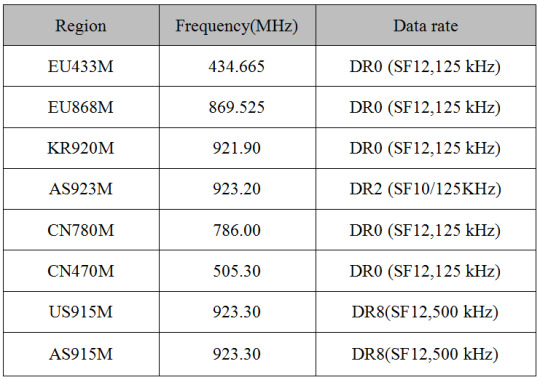
Receive Frequency channel :

Note:
The Tx rate of LG1301-SE is fixed as the Rx rate of LN610, the Rx data rate of LG1301-SE is not fixed which match to the LN610’s Tx rate automatically.
The Tx frequency of LG1301-SE is fixed, but it can receive the data from all the 8 channel simultaneously.
The maximum MACPayload size length (M) of LG1301-SE is 51bytes, the minimal Tx time interval is 2s.
2 notes
·
View notes
Text
RAK Anniversary Sale | Get 8% off on IoT Products
Upgrade your hotspot or LoRaWAN® gateway setup today. RAK antennas + Helium accessories at 8% off.
Valid until July 15, 2022.

No code needed.
Shop now: https://bit.ly/anniversary-antenna-sale
2 notes
·
View notes
Text
Unlocking Efficiency and Accuracy with Gateway Precision Technologies

In the rapidly evolving landscape of technology, businesses are constantly seeking innovative solutions to enhance their efficiency and precision. One such solution that has gained prominence is Gateway Precision Technologies. This cutting-edge technology, often referred to as a Precision Gateway, is revolutionizing industries by providing unparalleled accuracy, reliability, and speed.
For More:
0 notes
Text
What is the difference between the LoRaWAN wireless module and LoRa gateway wireless transmission technology?
Many individuals find it challenging to differentiate between the LoRaWAN wireless module and LoRa gateway wireless transmission technology, as well as their applications within the realm of IoT.
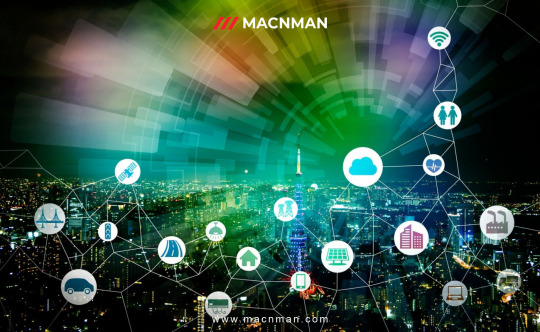
LoRaWAN specifically pertains to the networking protocol found within the MAC (Media Access Control) layer. In contrast, LoRa serves as a protocol within the physical layer. Although current LoRaWAN networking implementations utilize LoRa as the physical layer, it's worth noting that the LoRaWAN protocol also allows for the use of GFSK (Gaussian Frequency-Shift Keying) as the physical layer in specific frequency bands. From a network layering perspective, LoRaWAN can adopt various physical layer protocols, just as LoRa can serve as the physical layer for other networking technologies.
LoRa, as a technology, falls under the category of LPWAN (Low-Power Wide-Area Network) communication technologies. It represents an ultra-long-distance wireless transmission method based on spread spectrum technology, pioneered and promoted by Semtech in the United States. This approach revolutionizes the previous trade-off between transmission distance and power consumption, offering users a straightforward system capable of achieving extended range, prolonged battery life, and increased capacity. Consequently, it expands the capabilities of sensor networks. Currently, LoRa predominantly operates within free frequency bands globally, including 433/868/915MHz, among others.
On the other hand, LoRaWAN wireless communication stands as an open standard defining the communication protocol for LPWAN technology based on LoRa chips. LoRaWAN defines the Media Access Control (MAC) layer at the data link level and is overseen by the LoRa Alliance. It's crucial to distinguish between LoRa and LoRaWAN because companies like Link Labs utilize a proprietary MAC layer in conjunction with LoRa chips to create more advanced hybrid designs, such as Link Labs' Symphony Link.
LoRaWAN typically employs a star or star-to-star topology, which is generally considered superior to mesh networks due to advantages such as conserving battery power and extending communication range. In a star topology, messages are relayed to a central server through gateways, and each end node can transmit data to multiple gateways. These gateways then forward the data to the web server, where tasks like redundancy detection, security checks, and message scheduling are executed.
In summary, LoRa encompasses solely the link layer protocol, making it suitable for point-to-point (P2P) communication between nodes. In contrast, LoRaWAN includes the network layer, allowing data to be sent to any base station connected to a cloud platform. By connecting the appropriate antenna to its socket, the LoRaWAN module can operate at different frequencies, offering versatility in its applications.
0 notes
Text
RaspberryPi 4 Basic Kit is Now Available
The Raspberry Pi 4 Kit is now available Spread the good news or refer it to your friend using our Affiliate Program and get a 5% commission on each kit sold.
Here are the Raspberry Pi 4 Kits we have in store for all of you:

We have three variants and three different options available:

RAK Raspberry Pi 4 Kit is the latest addition to the popular Raspberry Pi series. It offers an excellent increase in processor speed, multimedia performance, memory, and connectivity over the previous generation Raspberry Pi 3 Model B+, while maintaining backward compatibility and similar power consumption.

Build your developer gateway for LoRaWAN® with the RAK Raspberry Pi 4 Kit for LoRaWAN®. It includes a Pi 4 (4 GB), a ready-to-use microSD card with Raspbian OS pre-loaded, a case, a power supply, a RAK2287 concentrator, a PiHAT for the concentrator, and a LoRa® antenna.

The Raspberry Pi 4 Model B (4 GB) is the best single-board computer for developing your IoT project and launching your first LoRaWAN® gateway.
Become a RAKwireless Affiliate and get your own Raspberry Pi 4 Basic Kit here: https://store.rakwireless.com/collections/raspberry-pi
3 notes
·
View notes
Text
LoRaWAN Series - Gateways & Nodes, Build for Raspberry Pi, Pico, Espressif, and much more
Introducing our LoRaWAN Series: the ultimate solution for seamless IoT integration! 🌐 Explore our lineup of Gateways & Nodes, compatible with TheThingsStack, Chirpstack & more. With long-range communication capabilities, your projects are limitless. !
Learn More - https://kck.st/3PQaIc6

0 notes
Text
Smart Parking Market Set to Skyrocket with 17.8% CAGR, Surpassing US$ 54.8 Billion by 2033
The smart parking market is projected to grow at a compound annual growth rate (CAGR) of 17.8% from 2023 to 2033. Although the market is estimated to be worth US$ 10.7 billion in 2023, it is expected to reach a market share of US$ 54.8 billion by 2033. A growing number of advanced guided park assist systems are being introduced, and fewer parking spaces are becoming available.
The rising population around the world along with the technological advancements in the automotive industry and its components are fueling the sales of smart parking systems.
The small spaces for designated parking demand a platform that provides the parking information, distance, and other details. Smart cloud integration, IoT integration, and vehicle detection sensors provide services like smart spots and mobile parking.
Smart parking can be explained as the joint parking strategy of technology and human innovation that saves time, fuel, and space while enhancing the overall parking experience.
The addition of a central server that inputs through sensors, cameras, parking meters, and smart city APIs and delivers output to management, authorities, and third-party solutions. This provides an ease to the end user in finding, purchasing, and locating a parking space for their vehicles.
Traffic and parking authorities across the globe are also promoting smart parking systems as it cuts the hassle and decreases manual inspection and parking allocation.
Vehicles with advanced transmission along with increased awareness around machine-to-machine communication have also limited the market space and have gained value for the smart parking market.
Get a Sample PDF of the Report https://www.futuremarketinsights.com/reports/sample/rep-gb-4511
Key Takeaways
The United States market leads the market in terms of market share. The market is anticipated to cross a value of 11.0 billion by 2033. The regional market is expected to record a CAGR of 12.9% between 2023 and 2033.
The smart parking market in China leads the space in terms of CAGR. It thrives at a CAGR of 28.7% during the forecast period. The market is likely to reach US$ 9.6 billion by 2033. The rapid growth is attributed to the increased population and the introduction of new parking guidelines.
The hardware component is likely to thrive in the component category due to their significant price and one-time application. It is expected to record a CAGR of 15.3% during the forecast period.
The guided park assist systems segment tops the system tally with a CAGR of 16.4% between 2023 and 2033. The growth is attributed to the autonomous parking operations that are auto-enabled in most of the high-tech vehicles.
Competitive Landscape
Providing full support for parking operations for saving time, fuel, and space is the motive of vendors while designing smart parking systems. The prominent players are focused on sensory technology that is also integrated with cloud storage. The companies are also involved in mergers & acquisitions and strategic partnership with other companies to increase the supply chain and distribution channel. The key players in the market include Siemens, Cisco Systems, Huawei Technologies, Delphi Technologies, Intercomp S.p.A.
Recent Development:
Siemens and TASS International (A Siemens business) has collectively introduced UrbanSmartPark. It is a European initiative that is currently going through its test phase on real-world scenarios. It is likely to provide information around accident databases, manually created scenarios.
Cisco Systems launched its IoT Solution with LoRaWAN to enable smart parking operations. While LoRa delivers parking sensors, Cisco delivers the IXM LoRa Gateway for Frankfurt E-parking Architecture.
Ask An Analyst https://www.futuremarketinsights.com/ask-the-analyst/rep-gb-4511
Key Segments
By Component:
Hardware
Sensors
Cameras
Parking Meters
Digital Guidance Signage
Others
Software
Parking Management Platforms
SDK/API
Services
Consulting
Integration & Support Services
Device Management Services
By System Type:
Guided Park Assist Systems
Smart Park Assist Systems
By Sensor Technology:
Ultrasonic Sensors
RFID
Image Sensors
Others
By Application Area:
Commercial
Government
Corporate
By Region:
North America
Latin America
Europe
Asia Pacific (APAC)
The Middle East & Africa (MEA)
0 notes
Text
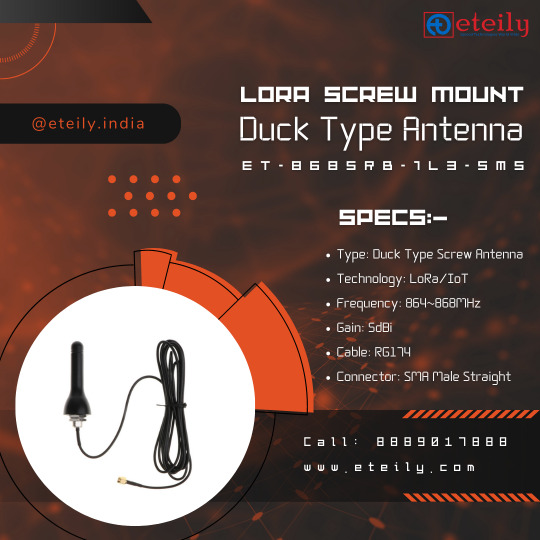
IoT LoRa Screw Mount Duck Type Antenna Manufacturers
ETEILY make LoRa Antenna's are high-performance, high gain, best quality. Eteily provides LoRa Antenna for External, Internal and outdoor gateway's. LoRa Antenna frequency includes 915MHz, 868MHz, 433MHz, 410MHz, 865MHz, etc. We provide LoRa LPWAN Gateway Antenna, Helium Minor Antenna all over the world.
IoT LoRa LPWAN antennas are designed to enable long-range communication with IoT devices using the LoRaWAN protocol. LoRaWAN antenna helium technology is designed for low-power, long-range communication, and LoRaWAN is one of the most popular LPWAN protocols.
Download Catalogues
High gain IoT antenna is a critical component of an IoT LoRa LPWAN system, as it is responsible for transmitting and receiving signals to and from the IoT devices. Best LoRa antenna typically operates at the Industrial, Scientific, and Medical (ISM) frequency bands, which are unlicensed frequency bands, and has a range of several kilometers. We are also manufacturer and suppliers of RF antenna in Delhi, Mumbai, Chennai, Hyderabad, Pune, Bangalore, Kolkata and Ahmadabad.
#IoT Lora LPWAN#LPWAN Antenna#IoT Antenna#Lora Antenna#LoRa LPWAN Antenna#LPWAN antennas - NB-IoT#Sigfox LPWAN Antenna#868mhz antenna#ISM LPWAN Antenna#LPWAN and ISM Antennas#LoRa Antennas: Long-Range IoT#Lora Wan Antenna#Lora communication antennas#Helium Minor Antenna in India#Buy SIGFOX/LORA ANTENNA#915MHz LoRa Antenna#LORA - Long Range - IOT#Lora Antenna 868mhz#Buy LoRa (868MHz/915MHz)#Sigfox Antenna Kit in India#Lora Module 868MHz-915MHz#GSM 2G 3G 868Mhz#1800Mhz LoRa antenna#868 Mhz - Radio Antennas#868MHz LoRa 10dBi Fiberglass Antenna#Outdoor Antenna 920~925 MHz#High Gain 868mhz/915mhz Lora Antenna#Outdoor Antenna IOT lorawan 433mhz#Miniature antenna for IoT devices#Lora Antenna 915mhz
0 notes
Text
Erste Erfahrungen mit NB-IoT-Devices von Efento
IoT-Devices auf Basis von LoRaWAN benötigen eine entsprechende LoRaWAN-Abdeckung durch einen Provider oder ein eigenes Gateway, um die über LoRa übertragenen Daten über eine Internetverbindung an den betreffenden LoRaWAN-Server zu senden.
Gibt es keine hinreichende LoRaWAN-Abdeckung und ein eigenes LoRaWAN-Gateway kommt, aus welchen Gründen auch immer, nicht in Frage, dann bieten sich die zwei…
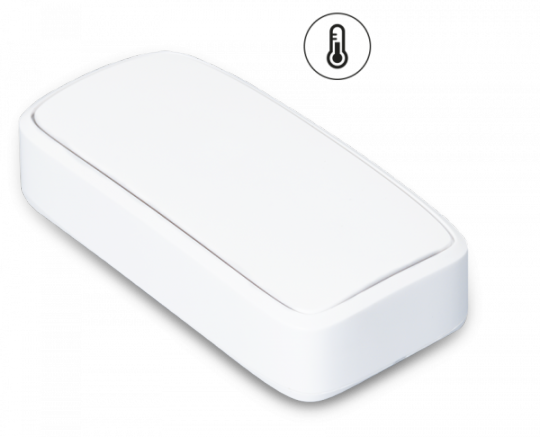
View On WordPress
0 notes
Text
LoRaWAN devices can communicate with gateways with a range of up to 15 kilometers in open areas and up to 5 kilometers in cities, which means a single gateway can cover all devices around 700 square kilometers. Coverage also extends indoors, reaching service ducts in basements or below street level.
0 notes
Text
Semtech & Sustainable Harvest Boost Durian Farming with IoT
Semtech Corporation (Nasdaq: SMTC) has announced a collaboration with Sustainable Harvest Sdn Bhd (SH) to bring advanced technology to Durian farms across Malaysia. SH has deployed Semtech’s LoRa-enabled sensors and LoRaWAN-based gateways to help farmers manage the challenging task of cultivating and harvesting Durian trees, notorious for their sensitivity to weather and moisture conditions.
The…

View On WordPress
0 notes
Link
LoRaWan1302 is a front-end LoRaWan gateway module developed by NiceRF. It’s high power, small size and SPI interface. The module adopts SX1302 and SX1250 chip scheme and is designed based on Semtech official standard. Built in TCXO crystal oscillator and temperature sensor, supports various frequency bands of 433 / 470 / 868 / 915MHz, and other specific frequencies can also be customized.LoRaWan1302 is a transceiver with dual antennas, which separates the transmitting antenna from the receiving antenna. The LoRaWan gateway module is designed with 1.5W output power, embedded small size and temperature sensor. LoRaWan1302 modules are strictly produced and tested by lead-free process, which comply with RoHS and REACH standards.
Features of SX1302 LoRaWan Gateway Module LoRaWan1302
LoRa long range module technology
Full duplex
Simultaneously receive LoRa packets
Dual digital Tx & Rx radio front-end
Dynamic data-rate adaptation (ADR)
Multi LoRa Spreading Factor
Maximum 10 channels
8 x Multi SF LoRa channels (SF7 to SF12 with125kHz Bandwidth)
1x LoRa channel (Bandwidth 125/250/500kHz)
1 x FSK channel
Application of SX1302 LoRaWan Gateway Module LoRaWan1302
Smart city
Smart Metering ( Water, Electric, Gas meter )
Agricultural Monitoring
Irrigation control
Internet of Things (IoT)
M2M
Wireless Sensors
Wireless Alarm and Security Systems
For details, please click
https://www.nicerf.com/products/detail/lorawan-gateway-module-lorawan1302.html
0 notes
Text
Basic Understanding of LoRaWAN Protocol
LoRaWAN Protocol
Hi everyone! In this blog post, I’m going to share with you some basics of LoRaWAN protocol, a low-power wide-area network technology that enables long-range wireless communication for IoT devices. LoRaWAN stands for Long Range Wide Area Network, and it is based on LoRa, a modulation technique that uses chirp spread spectrum to achieve high sensitivity and robustness against interference. LoRaWAN defines the network architecture and the communication protocols between the end devices, the gateways and the network servers. LoRaWAN supports different classes of devices, different frequency bands and different data rates, depending on the application requirements and the network conditions. LoRaWAN also provides security features such as encryption and authentication to protect the data and the network. LoRaWAN is an open standard that is maintained by the LoRa Alliance, a global association of companies and organizations that promote the adoption of LoRaWAN technology.
If you are interested to understand more about the LoRaWAN Protocol, then you can go through the PiEmbSysTech LoRaWAN Protocol Tutorial Blog. If you have any questions or query, that you need to get answer or you have any idea to share it with the community, you can use Piest Forum.
0 notes
Text

#The beacon#Badge constantly broadcasts#iBeacon information according to settings. It has two built-in CR2032 button cells. The broadcasting interval is 1 second. The maximum stan#beacon is mainly used for#indoor#tracking. It can also be attached to assets and therefore used for#asset tracking with the help of our#Bluetooth#gateways.#BeaconBadge#bluetoothgateway#lora#lorawan#iot
0 notes
Text
What is the LoRaWAN? Where is it used, and what is the cost?
Certainly, here's the information presented in different words:
LoRaWAN, which stands for Long Range Wide Area Network, is a wireless communication technology tailor-made for the Internet of Things (IoT). It's renowned for its capacity to transmit data over extensive distances while consuming minimal power, rendering it an excellent fit for diverse IoT applications.

Key points about LoRaWAN:
Technology: LoRaWAN employs LoRa modulation, a technology that enables long-range data transmission. It operates within unlicensed radio frequency bands, often in the sub-GHz range. LoRa's modulation technique ensures excellent signal reach and the ability to penetrate obstacles effectively.
Range: LoRaWAN can achieve impressive communication distances, spanning several kilometers in open environments. This makes it ideal for scenarios where devices must transmit data across substantial distances. However, actual range may fluctuate based on factors like topography and interference.
Power Efficiency: LoRaWAN devices are designed with power efficiency in mind, allowing them to operate on battery power for extended periods—sometimes years—before requiring replacement or recharging.
Network Architecture: LoRaWAN networks typically adopt a star-of-stars topology. IoT devices communicate with gateways, which relay the data to a central network server. This server processes and delivers the data for use in various applications.

Use Cases: LoRaWAN finds application in numerous IoT scenarios, including smart cities (for tasks like smart metering and waste management), agriculture (for monitoring soil conditions and crop health), industrial IoT (for asset tracking and predictive maintenance), and environmental monitoring (for measuring air quality and pollution levels), among others.
Cost: The cost associated with implementing a LoRaWAN network can vary widely, depending on factors such as the number of devices, required range, and the network infrastructure's complexity. Generally, LoRaWAN is seen as a cost-effective solution because it allows for large-scale IoT network deployments without the need for substantial infrastructure investments. The cost of LoRaWAN devices can also vary but is typically designed to be affordable, particularly for applications requiring numerous sensors.
LoRaWAN's popularity stems from its capacity for long-range communication, energy efficiency, and suitability for a diverse range of IoT applications. Its cost-effectiveness and adaptability make it a practical choice for organizations and industries seeking to implement IoT solutions to monitor and manage various aspects of their operations
0 notes